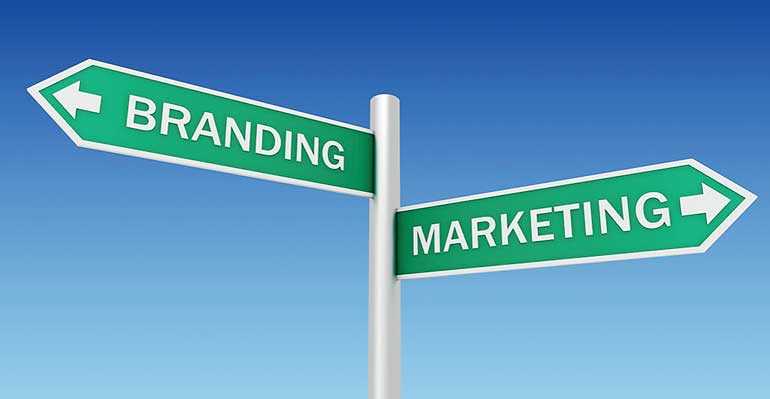Thursday Jan 01, 2026
Thursday Jan 01, 2026
Thursday, 19 December 2019 01:08 - - {{hitsCtrl.values.hits}}

When I published my philosophy ‘Travis Brandsology’ in 2012, I introduced a word called “Brand marketing”. Most of the marketers called me and indicated “your word seems funny” and laughed at my invention.
Within a year I saw this word appear in most of the leading newspapers. Also, in my first edition, I did mention that marketing as a philosophy is dead and Branding is the future. Once again the myopic audience laughed and after about a year I saw forums, symposiums and many articles speaking about the death of marketing and the evolving of Branding.
This is based on research which I did for the past three years and would like to publish for the knowledge of young marketers of the next generation.
Today, I state by the end of 2020, Branding will move into its new dimension which is called –Geographically On Line Amalgamated Technology or GOAT or I call it GOATING.
I invented GOATING to signify the next dimension of Marketing and Branding where it will rewrite traditional Segmentation, Targeting and Positioning.
Why I say this is for four reasons,
The world will be no longer be divided into regions or countries. It will be one. Once again techno invasion
The future will make all what we use obsolete and theories that speak about real physical experience will no longer exist. It will be all techno-driven
Techno Branding or Brand Technicians will take over marketing 
Marketing, Branding and sales will die and a set of people called ‘Technocrats’ will take over
Branding will change its dimension drastically and turn its face into a global village that is connected via technology which is geographically aligned.
For example look at 23andMe. A DNA-based software that has your print. 23andMe became the first company to begin offering autosomal DNA testing for ancestry, which all other major companies now use. The world is already using DNA technology to base target marketing.
What we learned as target marketing therefore need to change drastically.
What is GOATING?
It is a philosophy that I discovered that encompasses, geo-tracking, fencing, maths, engineering, technology, DNA based targeting, DNA based selling and Branding through Artificial Intelligence. General Management role will change to Geo specialisation, where Broad based Apps will come into play in managing most of the functions in an Organisations. CMO, CEO or even CFO positions will be replaced by Technocrats.
Not so long ago, marketing consumer products felt like a genteel game of lawn tennis: Established competitors invested in creative with long lead times, using proven models of TV and big-box retail, alongside trusted agency partners.
Video Marketing is already big today and nothing is scheduled for a change in the years to come. Video is an easy to the eye, interactive, and fun way for brands to communicate with its consumers. Sometimes they can communicate more through a 30-second video as opposed to a 1,500-word blog article
Today, it’s more like a sprawling contest of mixed martial arts, with new competitors playing by different rules; an unprecedented complexity of channels, content and partners; and a step change in speed and ways of working that has punches flying at incumbent consumer products companies.
Fuelling the blur of combat is a radical shift in brand growth models. Within the span of most executives’ careers, advances in technology have reshaped how consumers engage with brands. In the US and UK, more than 60% of consumers now discover products online, and 85% of millennials trust reviews from a faceless stranger more than traditional advertising. The same technology advances have dramatically altered the competitive landscape.
Reduced barriers to entry in selling and marketing new brands have shortened the shelf life of traditional brands, with 25% of growth going to insurgent competitors, who are redefining consumer expectations of brand purpose, service and engagement.
And technology has transformed the tools of the trade: Global spending on digital continues to grow at more than three times the rate of total ad spending, while programmatic spending has grown from 10% to more than 60% of ad spending in the last five years.
Voice Technology: An ‘echoing’ opportunity for brands to redefine customer engagement
Voice technology is making all the right sounds and is expected to be one of the most disruptive technologies in the years to come. A lot of experts around the world believe voice to be the next big thing for advertisers, mainly because of its ability to connect to people in a humane, and natural way.
It’s like we are talking to another human. Here lies the opportunity for brands to make a mark. Since the scope for personalisation here is immense, the content for voice needs to be curated in a particular tone and feel that appeals to people.
Findings by comScore suggest that 50% of all searches by 2020 will be voice searches. 55% of adults in the US will have a smart speaker by 2022, as per a report by OC & C Strategy Consultants. Tech giant Capgemini suggests that 24% of people prefer to use a voice assistant over visiting a website. Findings also reveal that out of the 71% of consumers who are satisfied with voice technology, 52% of them cite convenience, 48% love the hands-free scenario, and 41% prefer the automated shopping bit.
Video Marketing: Freedom of speech and expression to brands
Video Marketing is already big today and nothing is scheduled for a change in the years to come. Video is an easy to the eye, interactive, and fun way for brands to communicate with its consumers. Sometimes they can communicate more through a 30-second video as opposed to a 1,500-word blog article.
This trend is one for the future as well because the popularity of on-demand video is all set to keep increasing. Then there is social media videos which is perhaps the biggest sensation going around in the world right now.
While brands will be busy leveraging the might of video marketing in the time to come, they might want to focus a little on the SEO perspective as well. After all, the competition is going to be cutthroat and brands would definitely want their inch of visibility.
Video optimisation of strategically targeted keywords therefore will be the key behind effective ranking on YouTube or any other popular video-centric forum. Refer to the points below and you will know why video marketing will make a lot of noise in the years to come.
Fact file
By 2022, over 82% of all consumer internet traffic will be online videos. By 2021, Facebook might be an all-video platform with no place for text as per prediction by one of its executives. There will be close to 1 million minutes of video surfacing the internet on a per second basis by 2020.
Marketers are in the midst of unprecedented changes, fuelled by business technology and – just as powerfully – by changing consumer expectations. When surveyed about the future, they describe a professional work environment very different from the one they occupy today. For starters, marketers are predicting huge changes ahead in the kinds of tools they will use and the skills they will need to do their jobs. Machine learning, sophisticated analytics, and neuro-marketing are seen as the most important skills in the marketing department in 2025, and the tools that enable these will sit on top of the shopping list.
The corollary is that many current activities such as email marketing, social media marketing, and digital media marketing are expected to decrease – in some cases, dramatically.
While the tools marketers use and the skills they need will change, the core focus will not. Customer lifetime value will replace customer retention as the top priority, though retention remains in second place. The big mover is marketing-sourced revenue, which jumps from sixth today to third.
Pipeline generation drops out of the top three altogether. The really big change between now and the world of seven years in the future concerns lead generation. Across the board, marketers believe this will be much less of a priority.
Among large companies, the drop is from 18% to 6%, for medium companies from 21% to 6%, and in smaller companies (who presumably expect to be bigger companies by then) the proportion of marketers who say it will be a top priority craters – dropping from 26% to 9%.
That decline represents one of the biggest changes in the survey.
Today, marketing budgets are prioritised around advertising spend, with three of the top five marketing budget items reflecting this. The top five areas of spend are search engine marketing (SEM) and pay-per-click (PPC), traditional advertising, CRM, paid social, and headcount. SEM and PPC, along with traditional advertising and paid social, takes about 37% of them spend.
Compare that to platform/tech investments like CRM, CMS, and marketing automation and social media tools, which collectively account for 33%.That means Australia, like the more mature markets overseas in the US and UK, is rapidly approaching the day when technology spending outstrips campaign spending – a trend that has been evident for some time.
The larger a company is, the less it invests in technology as a percentage and the more it invests in advertising. Smaller companies have almost achieved parity between their tech spend and their ad spend, while the gap remains very pronounced among larger companies.
CEOs and CMOs also have very different perceptions about how the money is being spent. Marketers (who, after all, put the budgets together) say significantly more is spent on SEM, traditional advertising headcount, and contractors. CEOs are more likely to believe the money is being spent in areas such as paid social, direct marketing, marketing automation, and CRM.
CEOs believe that about 30% of the money is going to technology and 40% is going to advertising, while for marketers the figures are 18% and 44% respectively. CEOs also underestimate the headcount and contractor costs compared the CMOs – 6% to 23%.
Sounds like it might be worth it to sit down with the boss and run them through the budget. Larger companies spend more on traditional advertising than smaller companies, which makes sense, if only because they have more money to spend on more expensive platforms like TV.
Smaller companies prefer paid social as a channel more than larger ones, likely because the cost of entry is so much lower. Retailers love traditional advertising more than their peers. Manufacturers are much more likely to invest in CRM which makes sense since CRM is a B2B platform.
Conclusion
GOATING will be the next altitude of branding and by2025 there will be no theories in existence, it will be entirely practical. I am confident there won’t be anything to teach or preach. Institutes need to close down if they do not see this or change the direction of Marketing education to GOATING.
The 2025 youth will be extremely practical and work with robotics and will move there interest of being a Technocrat.